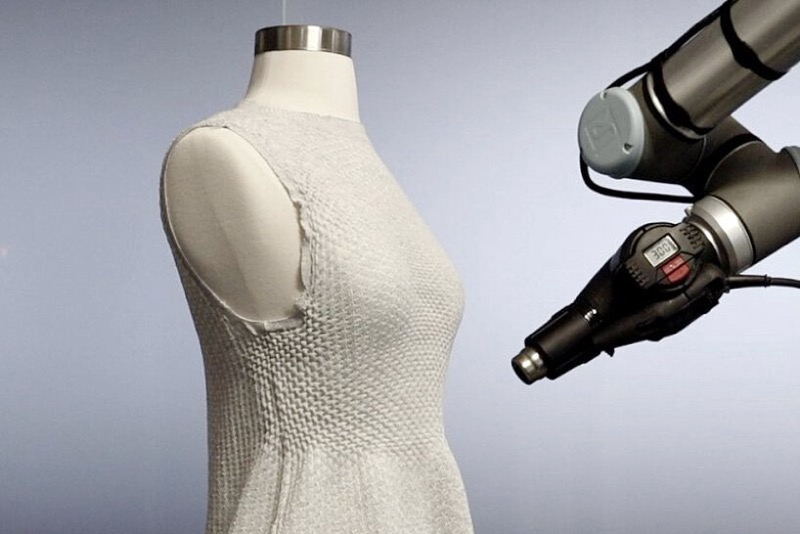
Custom clothing has always been central to men’s style. From the 19th-century tailors who meticulously measured men’s bodies to create suits that fit like a second skin to the elegance of Savile Row in the early 20th century, men’s fashion was once all about fit and personalization.
However, with the rise of mass production in the 1930s, tailored clothing became a luxury, with most men settling for the convenience of off-the-rack garments. Fast fashion later capitalized on this trend, further distancing the average man from custom-made clothing.
MIT’s 4D Technology
Nevertheless, recent technological advancements from MIT’s Self-Assembly Lab may herald the return of the personalized fit. MIT’s development revolves around a six-axis robot arm—initially used in car manufacturing—combined with computerized knitting and heat-activated yarns to create dresses that mold to the wearer’s body.
This so-called “4D” fabric can adjust and reshape itself as its temperature rises, clinging to the body’s contours and offering the precision fit once the domain of elite tailoring. This process is not just a modern-day shrink wrap.

According to MIT, the robot arm is programmed to add detailed design features—such as pleats, cinched waists, and pintucks—that give the clothing a sophisticated, structured look. The heat-activated yarn, guided by the robot’s sculpting, transforms the fabric into a custom-fitted garment.
While the technology has so far focused on women’s wear, the implications for men’s fashion are significant. The potential benefits for men’s clothing, especially knit suits, are enormous, particularly regarding sustainability and reusability.

Rather than discarding a suit that no longer fits, a man could reprogram his garment to adjust to his body as it changes over time. This shift from the traditional cut-and-sew model could revolutionize how men approach fashion.
“The technology is certainly impressive,” says Independence Brothers, a company specializing in tailored men’s clothing. “It’s not something you could use on a bespoke leather jacket, but it shows that customization may become mainstream in the apparel industry in the future.”

The ability to reprogram garments also suggests that retailers could reduce the sizes they need to stock, offering more customized fits while reducing overhead costs. The technology opens the door to a new era where men’s clothing can adapt over time, whether through changing body shapes or evolving trends.
The days of suits that gather dust in closets due to minor fit issues could soon be over, ushering in a world where every man’s wardrobe is functional and adaptable. MIT’s 4D customization concept was first tested at a Ministry of Supply store in Boston, where customers could witness the robot arm in action.
Although the system is still in its early stages, the potential for expansion into menswear is clear. As advancements continue, the dream of affordable, custom-made garments may soon reach the modern man.





